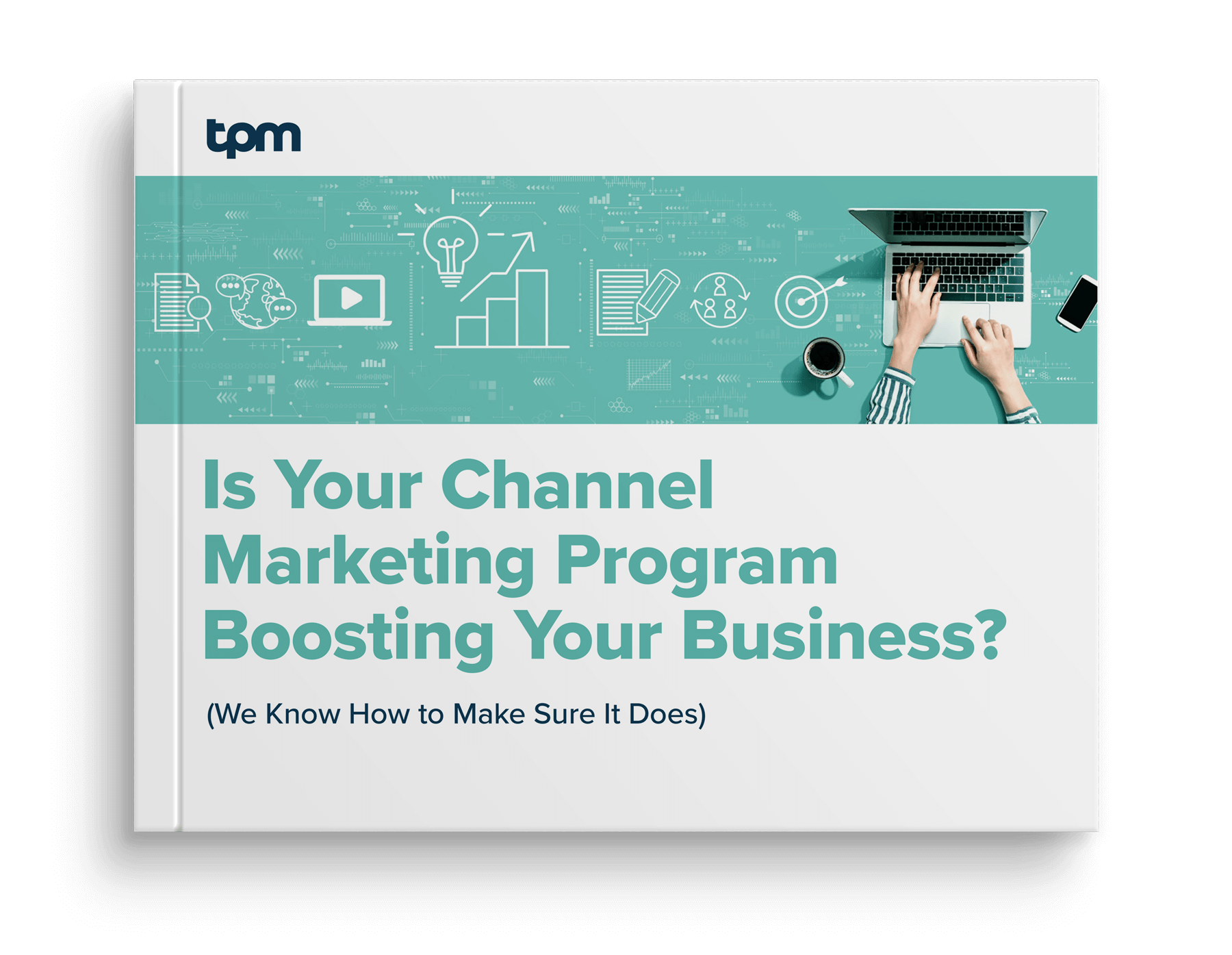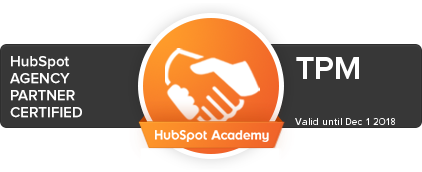Business to business (B2B) partner marketing strategies can be complicated. But they don’t have to be. TPM has built an easy-to-follow partner marketing playbook to help you navigate the partner marketing world and accelerate partner-influenced revenue.
Learn how to create relevant, partner-centric campaigns; discover how to scale co-branded campaigns across your ecosystem; and identify novel ways to encourage partners to participate and reap the rewards.

Why is a Partner Marketing Strategy Important?
In the world of B2B, partners and resellers constitute the most lucrative distribution channel to help you reach new customers. When channel partner relationships are managed correctly, partners can act as an extension of your marketing team, helping to quickly expand and grow your audience. Partner marketing is a distinct function and should not be treated the same as marketing directly to customers. Unfortunately, many vendors don’t recognize this distinction and end up delivering partner marketing campaigns that fall flat.
TPM’s Partner Marketing Playbook is packed full of tips to amp up your partner marketing strategy and deliver content and campaigns that drive real, measurable results for your business.
The Partner Marketing Playbook Contents

What is Partner Marketing?
Partner marketing is everywhere, but do you know what it really is? Simply, it’s an arrangement between two businesses (or a business and an opinion leader, influencer, or other individual) where both work together to help the other achieve their marketing objectives.
It encompasses various forms like affiliate marketing, channel marketing, co-marketing, partner enablement, and reselling. These strategies offer various benefits such as:
Increased efficiency
Access to new audiences
Competitive advantage
Reduced risk

Channel Marketing Strategies
The secret to channel marketing success is empowering your B2B partners to market and sell your product or service effectively. But while 88% of marketers agree that there is value in B2B partner marketing strategy, only 56% say their efforts have produced results in the last year. Clearly something isn’t working as it should.
We’ve found there are a few key ways to ensure the success of your partner marketing strategy:
Give partners what they want: collaborative thought leadership
Build programs that align with the three core partner marketing goals
Make it easy for partners to work with you

Creating Co-Branded Content
Collaboration is key in the world of B2B marketing. Co-branded content marketing strategies allow multiple brands to join forces and create compelling assets that elevate audience engagement and perceived value. By sharing expertise and resources, this approach not only opens new audience doors but also generates cost efficiencies.
The success of a co-branded content marketing strategy depends on it working for all parties involved in the collaboration. Here are three steps you can take to develop a flexible, successful B2B partner marketing project:
Select the right content format
Co-author the content outline
Allow for personalization

Channel Partner Program Measurement & ROI
Understanding the significance of channel partners isn’t enough. Measuring the ROI of partner marketing campaigns presents a unique challenge that demands a different approach from standard corporate marketing metrics.
Unlike traditional marketing, partner marketing requires a distinct measurement approach. The conventional metrics of customer engagement or conversion rates aren’t the sole indicators of success here. While intricate, tracking the value of partner initiatives is feasible, demanding innovative measurement strategies beyond standard marketing metrics like:
Partner engagement and satisfaction
Channel program effectiveness
Partner relationship management

Fix Your Channel Partner Program
While the concept of collaborating with companies selling your product seems logical, the ground reality persistent challenges challenges. Despite these obstacles, the inherent value in channel partner programs shines through.
These programs offer a multitude of advantages. They provide an avenue for cost savings by leveraging partners to execute marketing campaigns, widening audience reach by tapping into established partner relationships, contributing to increased sales that ultimately bolster revenue streams, and nurturing stronger, more resilient partnerships.
Let’s solve some of the most commonly cited channel program roadblocks:
Look for channel partners that can add value
Motivate your partners by communicating value
Make it easy for partners with smooth onboarding

Choose the Right Partner Marketing Agency
Navigating the landscape of B2B partner marketing agencies is no simple feat. While partnering with complementary organizations holds immense promise, achieving success in partner marketing isn’t assured.
With numerous options available, the prospect of outsourcing can be daunting. Yet, by understanding your challenges and needs, finding an agency capable of overcoming these hurdles becomes more manageable. Here is what to look for in a partner marketing agency:








